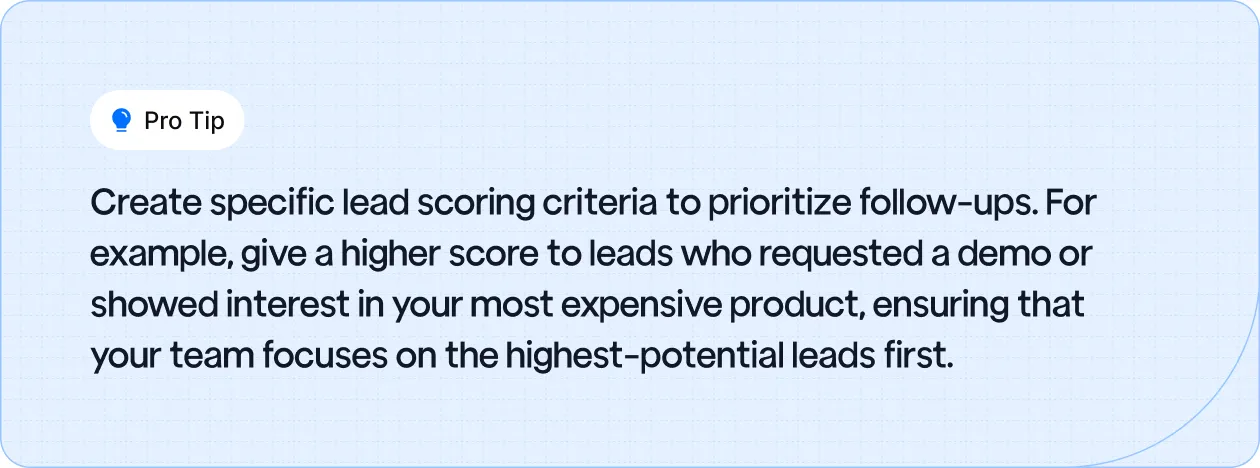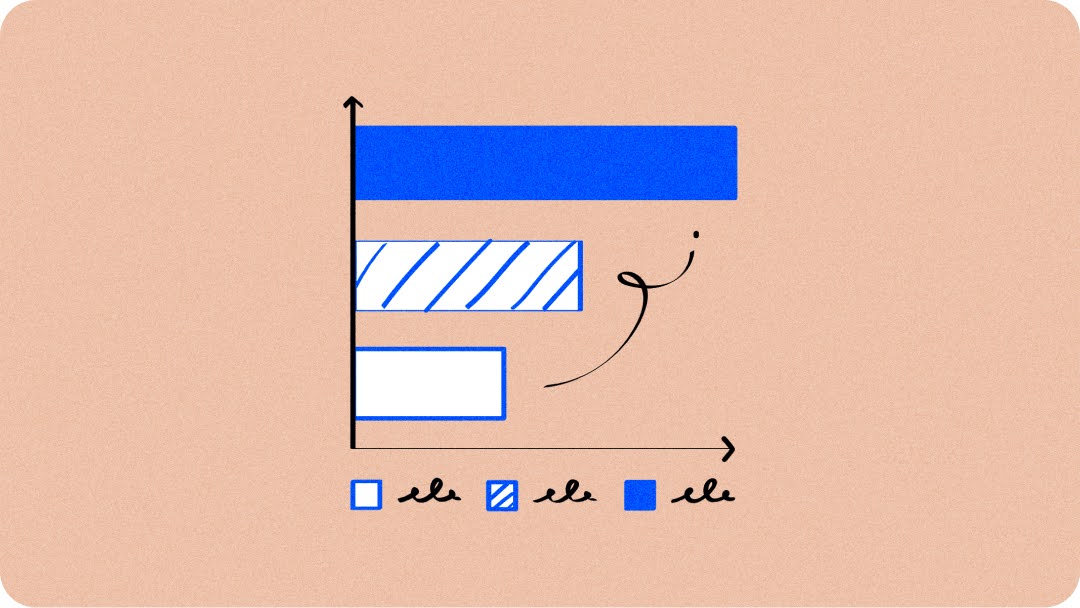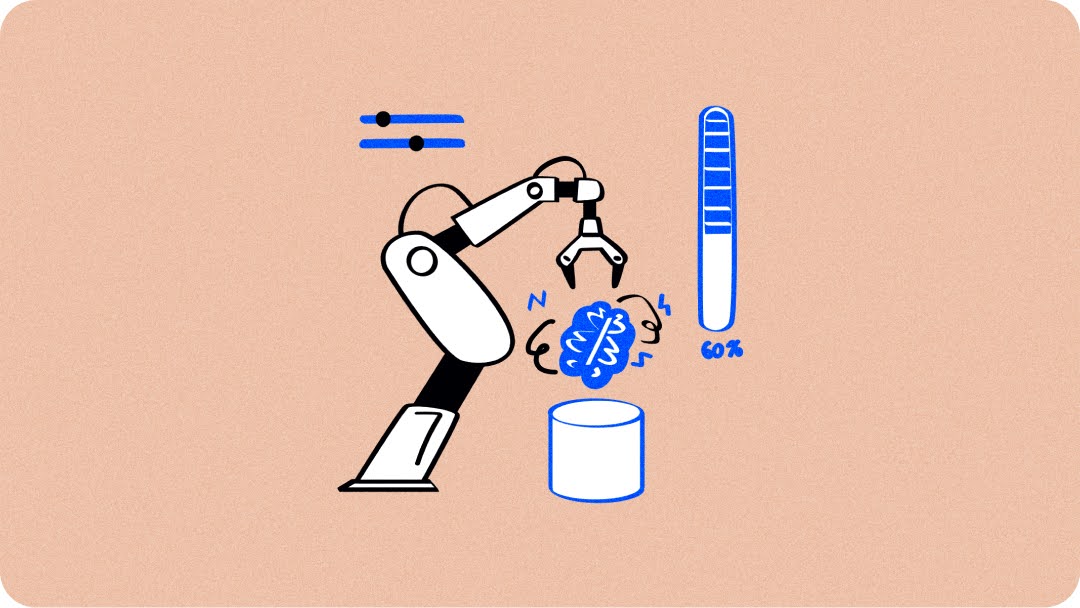You’ve spent weeks preparing for your trade show, fine-tuning your booth, your pitch, and your team. But now the event is over, and your biggest challenge is making sure all those leads don't fizzle out.
The truth is, most manufacturers fail to capitalize on their trade show success because they don’t have a clear, actionable post-trade show marketing strategy. Without a well-defined follow-up plan, all those promising conversations and new contacts will likely get lost in the shuffle.
If you're wondering how to avoid this costly mistake and turn those leads into real business, you're in the right place. This guide will walk you through proven post-trade show marketing strategies that ensure your hard work pays off long after the event ends.
1. Follow Up Fast: Don't Let the Momentum Fade
After the trade show excitement fades, the window of opportunity to connect with your leads is narrow.
Speed is crucial. Research shows that leads contacted within 24 hours are 60% more likely to convert. The faster you reach out, the more likely you’ll stay top-of-mind.
Why Fast Follow-Up Works?
The clock is ticking once the event ends. Immediate follow-up demonstrates urgency and commitment to solving your leads' problems.
It also keeps the positive interaction fresh in their minds, reducing the chance of them forgetting about you as other post-show content floods their inbox.
Actionable Tips:
- Prioritize leads based on the quality of your conversation. Did they express immediate interest or mention a pressing need? Focus on these leads first.
- Personalize your messages: Refer back to specific topics you discussed to remind them why your solution is relevant.
- Set clear follow-up goals: Determine the next step for each lead, whether it’s scheduling a call, sending product information, or offering a demo.

Visuals help reinforce your connection and make your email stand out in a crowded inbox.
2. Make It Personal: Your Leads Deserve More Than a Generic Email
Sending out a generic "nice to meet you" email is a quick way to lose engagement. Your leads expect personalized, relevant communication, not an unimaginative email. After an energetic trade show, they want to feel like they are more than just another name on your list.
Why Personalization Works?
Generic emails are easily ignored. Personalization, on the other hand, increases engagement by 29%. By tailoring your message, you show that you remember their specific needs, challenges, and the conversations you had at the show.
This approach keeps them engaged and enhances your credibility.
Tailor Your Messages to the Lead's Position in the Sales Funnel
When you’re trying to convert leads into customers, it’s crucial to understand where they are in their decision-making process. The key is to adjust your messaging depending on how “warm” or “cold” they are. This helps you stay relevant to their needs and increases the chances of closing the deal.
- Hot Leads (Ready to Buy): These leads are very close to making a purchase. They’ve shown interest and are likely to convert soon.
How to Approach Them:- Personalized Email: Send them a custom email that speaks directly to their specific needs, concerns, or previous conversations you’ve had. For example, if they’ve asked for a quote or product details, follow up with that information, and show how your product or service solves their problems.
- Follow-Up Call: After the email, make a call to discuss any last-minute questions or objections. This shows you're invested in their needs and ready to help them move forward.
- Warm Leads (Interested, But Not Ready to Buy): These leads have shown interest but aren't ready to purchase just yet. They might need more information or time to make a decision.
How to Approach Them:- Relevant Message: Craft a message that refers to your past interactions or discussions. You can remind them of the benefits your product offers and provide additional information, like case studies or product updates, to keep the conversation going.
- Provide Value: Send them something of value to help them move closer to making a decision, like a whitepaper, a helpful guide, or an offer for a demo.
- Cold Leads (No Recent Interaction, Less Interest): These leads have either shown minimal interest or haven’t engaged with your business for a while. You need to re-engage them with useful, informative content that sparks their interest again.
How to Approach Them:- Educational Email: Instead of pushing for a sale, send an email that offers value. This could be educational content that addresses common problems or industry trends. For example, you might share a blog post, an insightful report, or a case study that shows how your product has helped similar businesses.
- Reignite Interest: Your goal here is to remind them of the value you offer and reignite their curiosity, not to directly push for a sale. Make them see how your solution can solve their problems.
Example:
Subject: Great to Connect at [Event Name] – Let’s Take the Next Step
Hi [Lead Name],
It was great meeting you at [Event Name]! I enjoyed discussing [specific topic] and wanted to follow up to see how [product/service] could help address [specific pain point].
I’d love to schedule a call to explore how we can [solution benefit]. Let me know your availability!
Best regards,
[Your Name]
3. Get Organized: Use CRM to Convert Leads Into Clients
When you return from a trade show, you’ll have hundreds of leads to manage. Staying organized is crucial, and a CRM tool is your best friend for tracking and converting leads.
Why CRM Tools Work?
CRMs allow you to automate follow-ups, score leads, and track conversations, ensuring that no lead is forgotten. By prioritizing high-value leads through automation, you can make your follow-up more efficient and effective, saving your team valuable time.
Actionable Tips:
- Integrate leads into your CRM: Immediately after the event, input all your leads into your CRM system so you can track them effectively.
- Set up automated workflows: Use your CRM to schedule follow-up reminders, ensuring no lead is left behind.
- Create lead scoring criteria: Prioritize leads based on their engagement level, e.g., a demo request could score higher than a casual inquiry.

4. Build Trust: Turn Leads Into Relationships with Educational Content
Post-show engagement isn’t just about selling; it’s about building trust. After meeting a lead at a trade show, you need to demonstrate that your company is more than just a vendor; you are a trusted advisor.
Why Educational Content Works?
68% of B2B buyers say they prefer to research a solution on their own before making a decision.
Providing valuable content helps position your brand as an expert, making it easier for leads to trust you and move forward with your solution.
Actionable Tips:
- Share educational content: Send blog posts, case studies, whitepapers, and webinars that address your leads’ challenges.
- Nurture relationships: Offer content that is valuable and relevant to the lead’s needs, establishing your authority in your industry.
- Don’t rush the sale: Take time to build a relationship by being helpful, offering value before pushing for a purchase.
Hosting post-show webinars is a great way to engage with leads who showed interest but need more information before making a decision.
Offer a webinar that dives deep into solving the problem you discussed at the event. This will solidify your credibility.
5. Keep Them Engaged: Nurture Leads with Targeted Content
Follow-up doesn’t end with a single email. You need to consistently engage your leads with relevant content that keeps your brand top-of-mind.
Why It Works?
Consistent communication through valuable content increases the chances of turning a lead into a customer.
Actionable Tips:
- Use email marketing: Send targeted content that’s relevant to each lead's interests or needs, such as blog posts, case studies, or product demos.
- Maintain regular touchpoints: Create a content calendar to ensure you’re nurturing leads consistently without overwhelming them.
- Leverage remarketing ads: Use platforms like LinkedIn and Facebook to remind leads of your brand and drive them back to your site for further engagement.
6. Keep the Conversation Going: Social Media as Your Post-Show Ally
Social media can be a goldmine for staying connected with your trade show leads. Engaging on platforms like LinkedIn or Twitter can help nurture relationships and remind leads of your presence.
Why It Works?
Social media extends the conversation and can reinforce your brand’s value over time.
Actionable Tips:
- Leverage LinkedIn, Twitter, and Instagram: Share event highlights, follow up on conversations, and engage with attendees.
- Post event photos and videos: Highlight key moments, like product demos or speaker sessions, to keep the conversation alive.
- Encourage attendees to post: Create a branded hashtag for your event and ask attendees to use it, amplifying your presence.

7. Segment Smart: Tailor Your Message to Different Lead Types
Not all leads are ready to buy right away. By segmenting your leads, you can tailor your messages more effectively, increasing the chances of conversion.
Why It Works?
Tailored messaging speaks directly to a lead’s current needs, improving engagement and conversion rates.
Actionable Tips:
- Segment by engagement level: Depending on hot, warm, and cold leads.
- Tailor your messaging for each group:
- Existing clients: Focus on upselling or cross-selling additional services/products. Highlight benefits like loyalty programs or exclusive offers.
- New prospects: Offer introductory content like product demos or case studies. Focus on how your solution can solve their pain points.
- Warm leads: Provide personalized content that addresses their specific challenges, showing them how your product/service can add value.
Example:
For existing clients, an email might look like:
Subject: Unlock New Benefits with [Your Product/Service]
Hi [Name],
I hope you're enjoying your [current product/service]. We’ve recently introduced [new feature], and I think it could really streamline your processes. Let me know if you'd like to set up a demo!
Best regards,
[Your Name]
8. Repurpose to Reach More: Turn Event Content Into Engagement
Your event generated tons of content, don’t let it go to waste. Repurpose photos, videos, interviews, and product demos into engaging follow-up materials that can continue the conversation long after the event ends.
Why Repurposing Works?
Repurposing content gives you more touchpoints with your leads. It ensures your brand stays top-of-mind while adding value to your leads' decision-making process.
Actionable Tips:
- Repurpose event content:
- Blog posts: Share insights from your booth or summarize key takeaways from discussions with industry experts.
- Videos: Post clips from product demos or keynotes to give your audience a behind-the-scenes look.
- Infographics: Create visual representations of event highlights or product features discussed at the show.
- Highlight your booth: Create a post-show “highlight reel” showcasing the most engaging moments from your booth, product demos, speaker sessions, or key interactions with attendees.
Pro Tip: A well-crafted highlight reel can increase your brand’s visibility by reminding attendees of their interaction with your booth. This extra touchpoint can bring them back into your sales funnel.
9. Measure What Matters: Track Your Post-Show ROI
How do you know if your post-show efforts are working? The answer lies in tracking the right metrics. Measuring ROI is crucial to understanding whether your follow-up strategies are successful.
By focusing on key performance indicators (KPIs) like lead conversion rates, email open rates, and content engagement, you can get clear insights into what’s driving results and what needs improvement.

Actionable Tips:
- Calculate ROI: Track how many leads converted into customers after the event and compare this to the overall investment in the trade show (booth costs, travel, marketing).
- Monitor engagement: Pay attention to metrics like email open rates, click-through rates, and social media interaction to gauge the effectiveness of your follow-up content.
- Leverage CRM tools: Use CRM and sales tools to track each lead’s journey from initial contact to conversion.
Example:
- Metrics to track:
- Lead conversion rate (how many leads turn into sales)
- Email open rates (how effective your emails are at grabbing attention)
- Content engagement (how your leads interact with your blog posts, videos, and case studies)
10. Get Feedback: Learn From Your Event to Improve Future Strategies
Post-show evaluations are key to refining your strategies for the next event. Gathering feedback from your team and leads allows you to understand what worked, what didn’t, and what could be improved.
This invaluable insight helps shape your future trade show participation and follow-up tactics.

Actionable Tips:
- Survey your team: Ask your team about their experiences at the show, what went well, what challenges they faced, and how the booth could be improved.
- Collect feedback from leads: Send out surveys or personal follow-up emails to get their input on your booth, presentation, and product offering.
- Analyze the data: Use the feedback to identify trends, such as common concerns or questions that can be addressed in future content or follow-up strategies.
Pro Tip: Incorporating feedback into your next strategy will not only improve future shows but also boost your credibility with leads who will appreciate your efforts to continually improve.
11. Stay in the Game: Plan Long-Term Engagement for the Next 90 Days
Your post-show marketing shouldn’t end in a week. In fact, the best manufacturers understand that the real work happens over the next three months.
Planning long-term engagement ensures that your leads remain nurtured and interested, guiding them steadily towards conversion.
Consistent, thoughtful communication keeps your brand relevant and top-of-mind for prospects.

Actionable Tips:
- Plan follow-up content for the next 90 days: Create a content calendar that includes emails, webinars, case studies, and product updates to maintain lead engagement.
- Segment your nurturing approach: Customize your communication for different types of leads (e.g., hot leads get more frequent follow-ups, while cold leads receive educational content over time).
- Use email drip campaigns: Implement automated email campaigns that slowly nurture cold leads until they’re ready to convert.
Pro Tip: Email drip campaigns are essential for nurturing cold leads over time. By sending relevant content at the right intervals, you can keep your leads engaged without overwhelming them.
12. Real-World Example: Post-Show Success in Action
Company: Telaeris Inc.Industry: Emergency Management Systems
Challenge: Converting trade show leads into long-term clients
Solution: Automated follow-up system using Drip email marketing platform
Outcome: Increased qualified sales opportunities and more deals signed with less effort
Steps Taken:
- Lead Capture: Utilized badge scanners at trade shows to quickly collect lead information.
- Automated Follow-Up: Implemented an email drip sequence tailored for each trade show, sending personalized thank-you emails and relevant content to leads.
- Consistent Engagement: Maintained regular communication with leads through automated emails, keeping the company top-of-mind.
- Conversion Tracking: Monitored lead engagement and adjusted strategies to improve conversion rates.
Results:
- Enhanced lead nurturing with minimal manual effort
- Improved lead conversion rates
- Strengthened relationships with potential clients
Wrap-Up: Turn Your Trade Show Success Into Long-Term Profits
Your trade show efforts don't have to end when the event does. By implementing the right post-show marketing strategies, you can transform initial leads into long-term customers.
Follow up quickly, personalize your outreach, leverage CRM tools, provide educational content, and stay engaged with targeted communications, all of which will keep your brand top-of-mind.
Segmenting leads, repurposing event content, and tracking your ROI will help you refine your approach and improve future trade show results.
FAQs
Q1. Why is follow-up speed so crucial after a trade show?
A1. Follow-up speed is crucial because the longer you wait to reach out, the more likely your leads will forget your brand. Sending a follow-up within the first 24-48 hours helps maintain the excitement and keeps your company fresh in the minds of attendees. Quick, personalized communication increases the chances of converting leads into customers.
Q2. How do I prioritize leads after a trade show?
A2. Prioritizing leads requires segmenting them based on their engagement level. Hot leads who expressed immediate interest should be followed up with first. Warm leads who showed potential interest can be nurtured through targeted content. Cold leads should receive educational follow-ups to reignite their interest. Using CRM tools can help automate and track these priorities efficiently.
Q3. What content should I send to leads after a trade show?
A3. Post-show content should focus on educating leads and building trust. Consider sending case studies, whitepapers, blog posts, and webinars that address the specific pain points of your leads. Repurposing event content, like product demos or interviews, can also serve as engaging follow-up materials. The key is to keep your content relevant and valuable to each lead's needs.
Q4. How do I track the success of my post-show marketing efforts?
A4. Tracking the success of your post-show marketing requires measuring key metrics like lead conversion rate, email open rates, and social media engagement. Use CRM tools to monitor lead behavior and sales pipeline movement. Evaluating ROI will help you understand how effectively your post-show efforts are converting leads into long-term clients.
Q5. How often should I follow up with leads after a trade show?
A5. Your follow-up strategy should include multiple touchpoints over a few months. After the initial follow-up within 24-48 hours, send targeted emails and content at regular intervals. Email drip campaigns can help maintain engagement, especially for cold leads. Consistent but non-intrusive follow-ups help keep your brand top-of-mind without overwhelming prospects.
Q6. Can social media help with post-show engagement?
A6. Yes, social media is a great tool for keeping the conversation going after a trade show. Share event highlights, interviews, behind-the-scenes content, and engage directly with attendees. Use platforms like LinkedIn, Twitter, and Instagram to maintain visibility and encourage further interaction. Creating a branded hashtag can also help expand your reach as attendees share content.




















.webp)








.webp)
.svg)


.svg)
.svg)
.svg)







.svg)